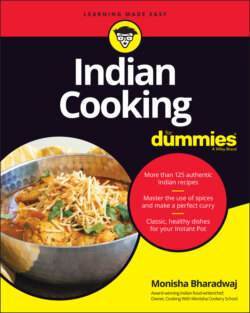Читать книгу Indian Cooking For Dummies - Monisha Bharadwaj - Страница 18
Punjab and the Partition of India
ОглавлениеA number of Indians who live outside of India are Punjabi in origin. Around the time of Partition, when the state of Punjab got divided, Hindus living in the newly formed country of Pakistan and Muslims living in the Indian part of Punjab crossed borders, giving rise to one of the world’s largest human migrations. The chaos, genocide, and displacement meant that some people fled to postwar Britain where jobs were available along with the opportunity to begin life anew.
They brought with them the unique food of the North — so much so that, today, in many parts of the world, when someone talks of Indian cooking, it’s Punjabi food that they’re referring to. Rich onion- and tomato-flavored curries, aloo gobi, saag paneer, or the delicious tandoori foods (cooked slowly in a clay oven called the tandoor), even the naans and parathas, all came from Punjab.
Ingredients that you would commonly find in a Punjabi kitchen are beans such as chickpeas and red kidney beans; black lentils; vegetables such as cauliflower, potatoes, peas, and turnips; and whole-wheat flour to make many kinds of breads. Punjab grows a lot of wheat and was once known as the granary of India.
There are many stories about how tandoori cooking came to be associated with India. It was already being used in undivided Punjab and, after Partition, found its way to the Indian side of the state. Because a tandoor is quite large and needs to be brought to the right temperature over some time (as you do with a barbecue), it was impractical for every Punjabi home to fire one up every evening. Communal tandoors were set up, with each village having one. People prepared their dough at home and took it to the village tandoor to have their rotis cooked. Eventually, commercial tandoori shops offered cooked breads to take away, and the communal tandoor became less of a ritual; today, only a few villages have one.
